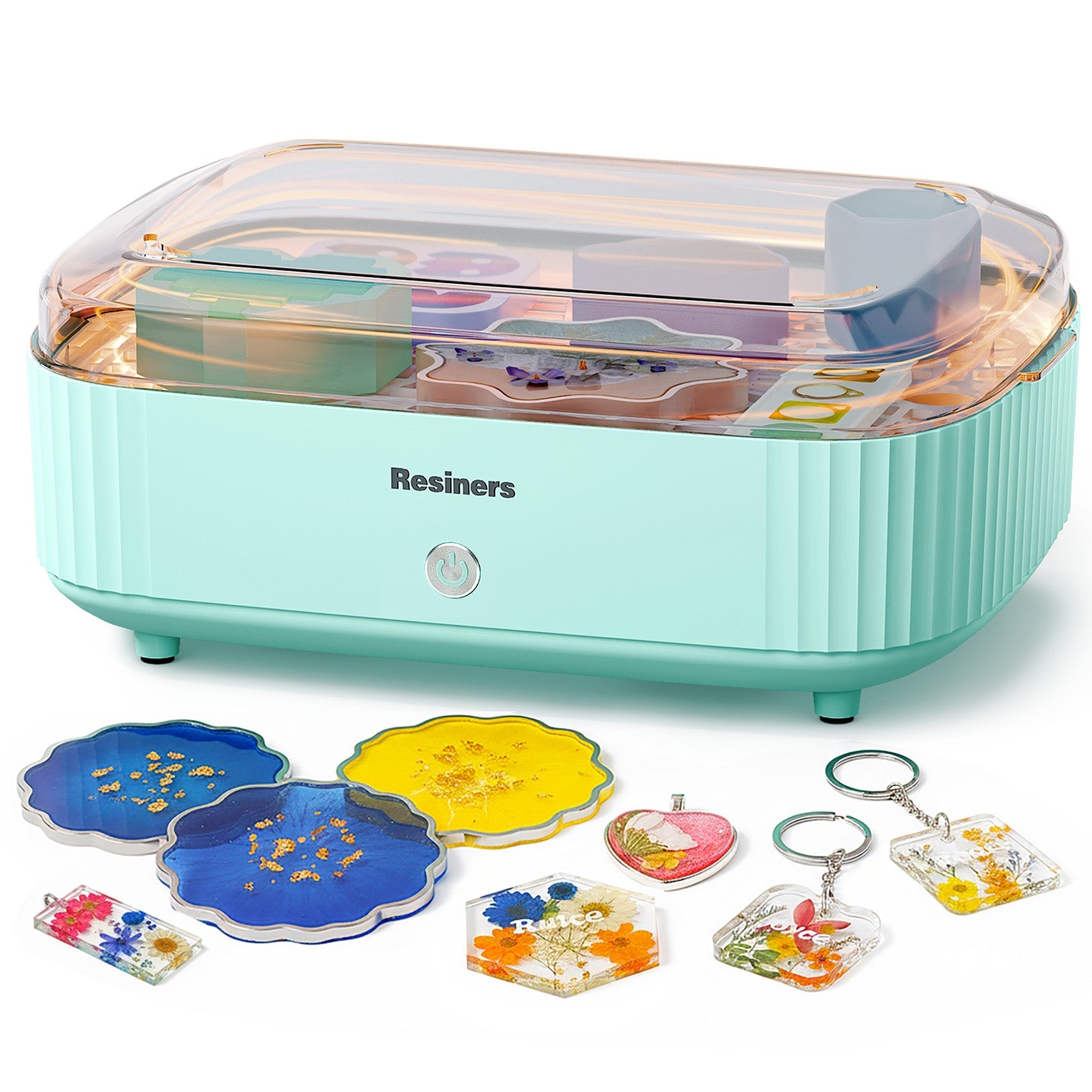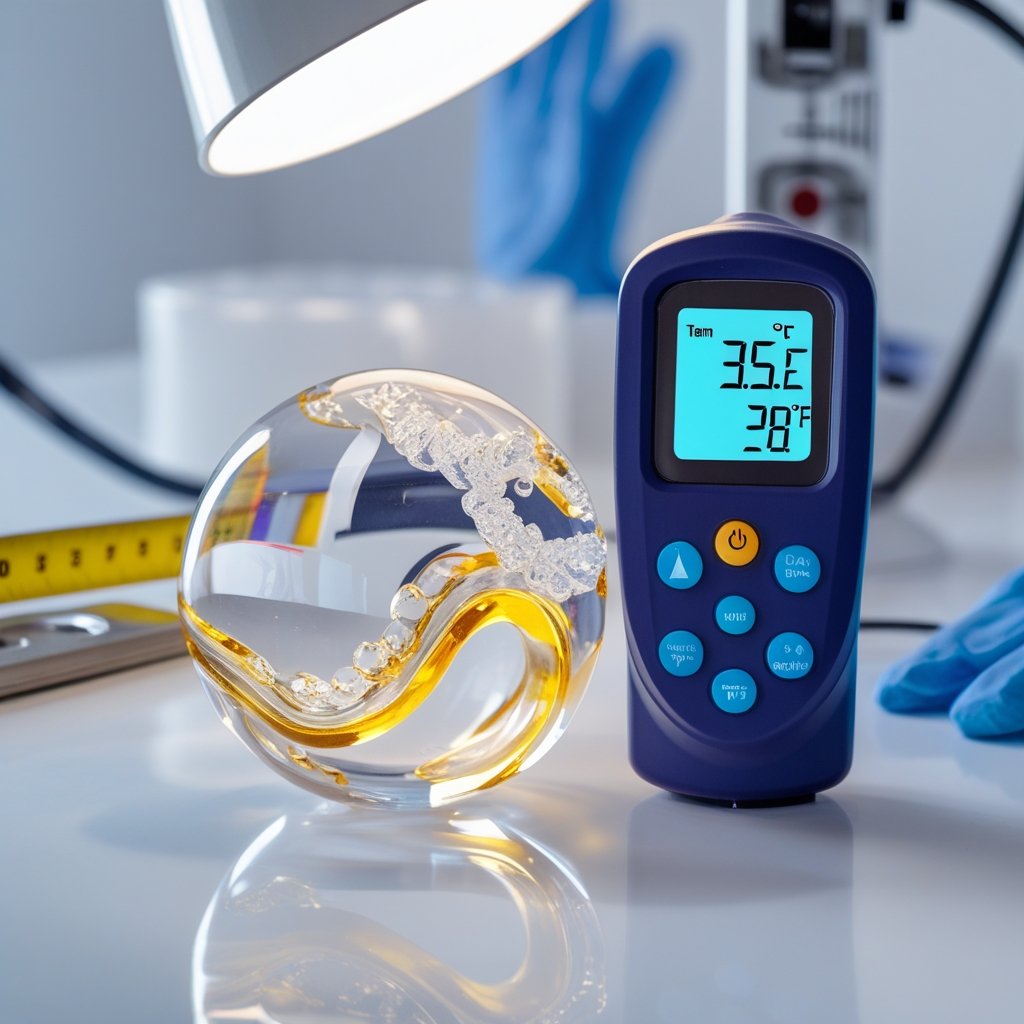As resin artists, while creativity and technique are paramount, we must not overlook the importance of air quality in our workspaces. Poor air quality poses serious health risks, especially from volatile organic compounds (VOCs) emitted during resin use.
In this blog, we’ll examine the role of air purification for resin users, comparing traditional protective measures like PPE, ventilation, and activated carbon with advanced solutions like Purair. We’ll clarify what TVOCs are, their associated risks, and the limitations of conventional methods.
Understanding these differences will highlight why Purair is essential for a safe working environment. With Purair, you might even find that you can work comfortably, enhancing your health and creative process. Let’s explore how effective air purification can elevate your artistry while protecting your well-being.
What are TVOCs?
Total Volatile Organic Compounds (TVOCs) are a group of organic chemicals that easily evaporate at room temperature. They are commonly found in our living environments, and emitted from building materials, household products, and cleaning agents.
Harm of TVOCs
Exposure to high levels of TVOCs can pose significant health risks, including respiratory issues, headaches, dizziness, and irritation of the eyes, nose, and throat. Prolonged exposure may lead to more serious conditions, such as liver and kidney damage, or even affect the central nervous system. Additionally, certain VOCs are known carcinogens, increasing the risk of cancer with long-term exposure. Reducing TVOCs levels in indoor environments is crucial for maintaining good air quality and safeguarding health.

TVOCs Associated with Epoxy Resin
Epoxy resins can release various volatile organic compounds (VOCs) during their application and curing processes. Common TVOCs associated with resin epoxy include:
Bisphenol A (BPA): Often used in the production of epoxy resins; exposure may disrupt endocrine functions.
Amines: Used as hardeners in epoxy formulations; can cause skin irritation and respiratory issues.
Solvents: Such as toluene, xylene, and acetone, which can be present in solvent-based epoxy systems; these can lead to various health concerns.
Epoxy Resin TVOCs Health Risks and Dangers
Short-Term Effects:
Inhalation of VOCs from epoxy resin can lead to respiratory irritation, affecting the nose, throat, and lungs. Additionally, exposure may result in headaches, dizziness, and nausea. Direct contact with uncured epoxy can cause skin rashes and eye irritation.

Long-Term Effects:
Repeated exposure to epoxy resin can lead to sensitization, causing allergic reactions upon future contact. Additionally, prolonged exposure may contribute to chronic respiratory conditions, further complicating health outcomes. Some VOCs associated with epoxy can also affect the nervous system, potentially resulting in memory issues and cognitive dysfunction. These risks underscore the importance of taking appropriate safety measures when working with epoxy materials.

Environmental Impact:
TVOCs can contribute to indoor air pollution, which is associated with various health risks, especially in poorly ventilated spaces.
While you’re crafting with resin, other family members nearby might experience eye irritation, headaches, or throat discomfort from the fumes. At the same time, your pet resting on the floor could inhale the settled chemicals or lick surfaces, leading to lethargy or health issues.

By understanding the sources and impacts of TVOCs from resin products, you can take proactive steps to ensure a safer working environment. However, there's no need for excessive worry. Epoxy resin primarily releases TVOCs during application and curing processes. Once fully cured, it no longer emits TVOCs, making it safe for long-term use.
Traditional Protective Measures
1. Personal Protective Equipment (PPE)
A Personal Protective Equipment (PPE) system for air purification is designed to protect individuals from airborne contaminants, ensuring safety in environments where exposure to harmful substances, like volatile organic compounds (VOCs) and particulates, is a concern. A PPE system for air purification includes several key components:

- Protecting hands from harmful chemicals and solvents
- Protecting eyes from hazards like chemicals and debris
- Protective clothing consists of chemical-resistant coveralls, gloves to prevent skin contact, and goggles or face shields for eye protection.
- Air purifying respirators (APRs) use filters to remove contaminants from the air.
Disadvantages of PPE handling TVOCs
While personal protective equipment (PPE) is essential for safety when handling resin fumes and volatile organic compounds (TVOCs), it has several disadvantages.
- Incomplete Elimination. PPE cannot eliminate the presence of TVOCs in the air; it only serves as a barrier against exposure.
- Insufficient Chemical Filtration. Not all PPE effectively filters specific chemicals, which can leave workers vulnerable to harmful substances.
- Discomfort During Use. Wearing PPE for extended periods can lead to discomfort, reducing productivity and focus.
- False Sense of Security. Relying solely on PPE may create a false sense of safety, leading individuals to overlook other essential safety measures like proper ventilation and exposure monitoring.
- Maintenance and Replacement Costs. Regular maintenance and timely replacement of PPE are necessary to ensure its effectiveness, which can increase operational costs.
- Risk of Misuse. Without proper training, PPE may be misused, inadvertently increasing the risk of exposure.
- Need for Comprehensive Safety Measures. While PPE is a vital part of a safety strategy, it should be complemented by comprehensive measures that address air quality and overall workplace safety.
2. Ventilation
Ventilation is a common method for improving indoor air quality by introducing fresh air to dilute indoor pollutants. Poor ventilation can cause air to become stagnant, leading to moisture buildup, especially in areas where air doesn't circulate well. This extra moisture, combined with organic materials like dust and cellulose, creates a perfect environment for bacteria and mold to grow. Without enough airflow to reduce this humidity, mold can spread quickly, which can harm both health and the structure of indoor spaces.
However, Ventilation effectiveness can be influenced by weather conditions and external pollution levels.
In high-pollution scenarios, ventilation alone may not offer sufficient protection. Temperature also significantly impacts ventilation performance. During winter, the efficiency of ventilation systems can decrease, resulting in longer times to disperse resin fume TVOCs. It can brings in cold air, takes hours or even longer to clear TVOCs, and may expose you to outdoor air of poor quality. Additionally, when cold air is drawn in, it lowers the indoor temperature, which can make resin makers uncomfortable and hinder proper curing of resin projects.
However, Resiners Purair can effectively reduce resin fume TVOCs in a much shorter time than traditional ventilation systems, while also maintaining a warmer indoor environment for resin makers.
3.Activated Carbon
Activated carbon is commonly used for air and water purification due to its ability to adsorb harmful substances.
However, when the carbon becomes saturated—meaning it has absorbed as much material as it can hold—it can start to release some of the previously absorbed contaminants back into the environment. This process, known as desorption, can lead to secondary pollution, where harmful substances are reintroduced into the air or water instead of being permanently removed.
This is an important consideration when using activated carbon for filtration, as it highlights the need for regular replacement or regeneration of the carbon to ensure effective purification and prevent unintended pollution.
4. Traditional Air Purifiers
Traditional air purifiers are devices designed to improve indoor air quality by removing pollutants, allergens, and contaminants from the air. They typically use a combination of filtration methods to capture particles and reduce airborne irritants.
While traditional air purifiers excel at removing particulate matter, they often fall short in tackling gaseous pollutants like TVOCs released during resin making process. Many conventional purifiers use activated carbon in their filters, which need to be changed frequently. This not only results in higher maintenance costs but can also cause secondary pollution during the replacement process.
Why Choose Purair?
Purair offers an innovative air purification solution specifically designed to address resin fume issues. Here are several reasons to consider Purair:
- Purify Your Resin Workspace with Confidence - Tailored specifically for resin artists, the Resiners Purair Air Purifier effectively removes 83.59% of toxic VOCs from epoxy resin fumes. SGS-certified and tested in high-VOC environments, it offers superior protection for your health and creativity, ensuring a cleaner and safer crafting space.
- Advanced Dual-Layer Filtration for Maximum Protection - Layer 1. Pre-Filter: Captures large particles like dust, fibers, and hair. Layer 2. H13 HEPA Filter: Detoxifies 99.97% of airborne particles as small as 0.3 μm, including fine dust, smoke, pollen, and harmful VOCs from resin fumes. Experience a fresh, safe workspace free of secondary pollution.

- Smart Air Quality Monitoring - The Resiners Purair’s real-time air quality sensor detects harmful pollutants and provides instant air quality updates. With clear LED indicators (green, yellow, or red) and resin TVOC data, you’ll always know the air quality at a glance.

Choosing the right air purification solution requires a clear understanding of the benefits and limitations of different options. The Resiners Purair is designed to effectively eliminate harmful TVOCs produced by resin fumes, providing a convenient and efficient alternative to traditional methods. For a healthier living environment, it’s time to embrace the Resiners Purair on your resin-making journey!
If you have more questions about the Resiners Purair Air Purifier, we invite you to explore our blog post addressing the most frequently asked questions: Frequently Asked Questions About the Resiners Purair Air Purifier. Thank you for joining us on this quest for cleaner air!













Dejar un comentario
Este sitio está protegido por hCaptcha y se aplican la Política de privacidad de hCaptcha y los Términos del servicio.